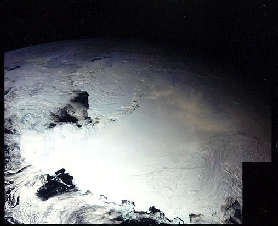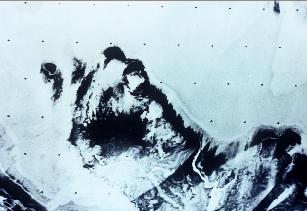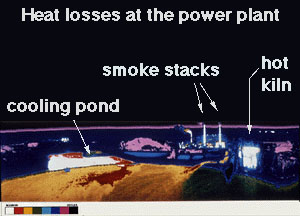Polar Caps
The table below shows ice at the polar caps of Earth and Mars.
Earth

Antarctica from space.
Image courtesy of NASA/JPL
Earth has polar caps at the north and south poles.
The
image above shows ice at the south pole of the Earth, taken by the Galileo
spacecraft on December 8, 1990. This is the first picture of the whole
continent taken nearly at once from space. |
Mars

Ice cliffs at the Martian north pole.
Click on image for full size (55K jpeg)
Image courtesy of NASA
Mars also has polar caps at the north and south poles.
The image
above shows a close up of ice at the north pole of Mars taken by the Mariner
mission. |









